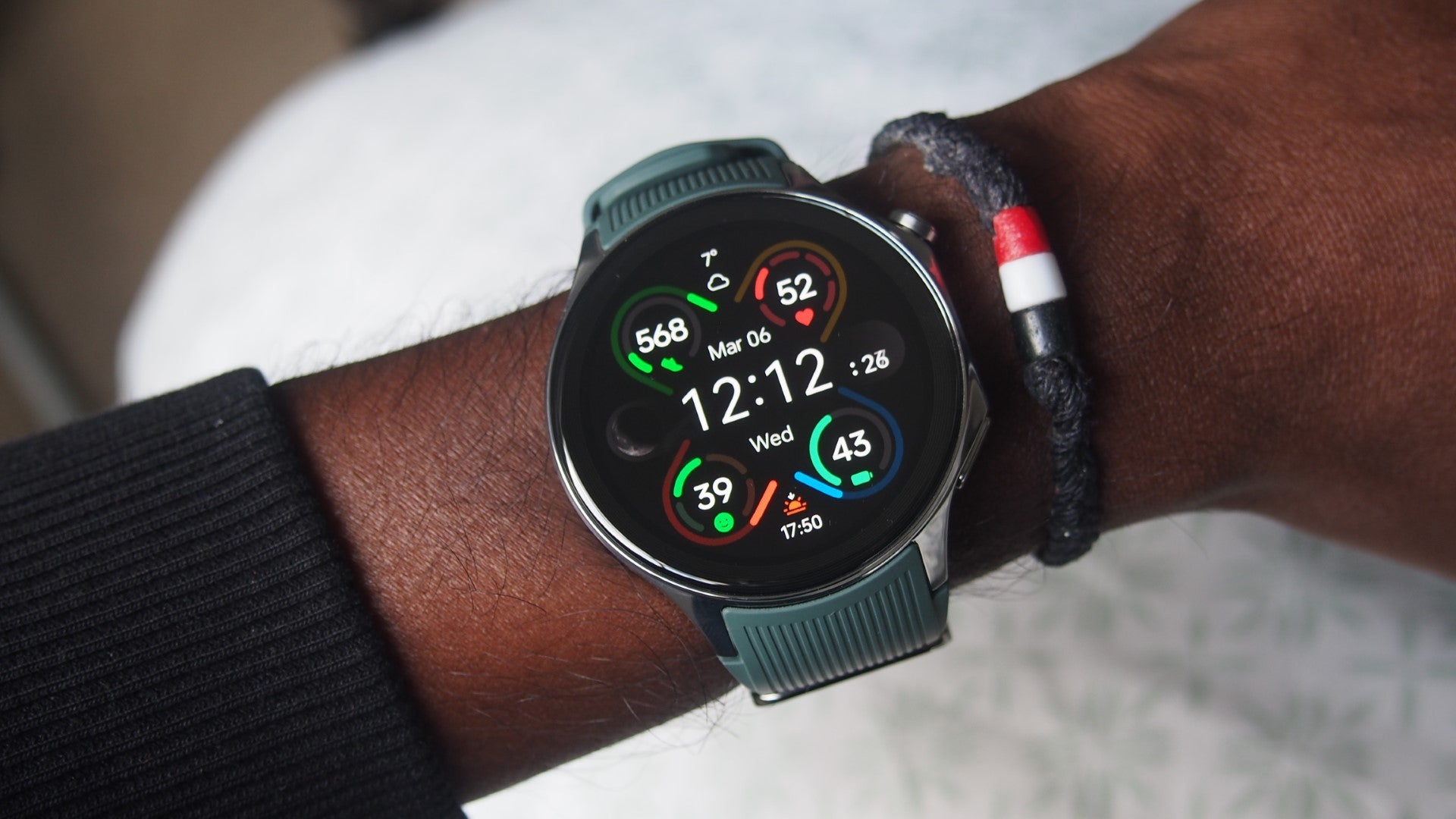Fitbit Versa 4 Review
A solid, affordable fitness tracker packed into a smartwatch body
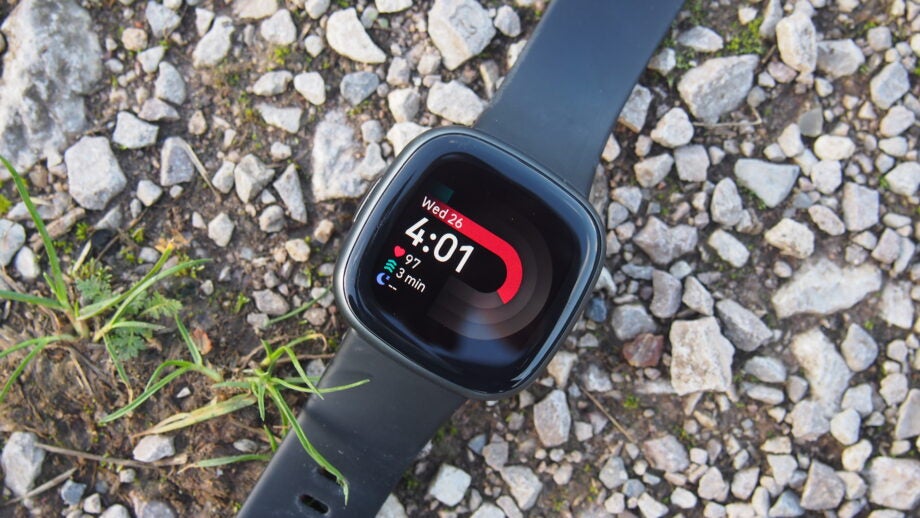
Verdict
The Fitbit Versa 4 is a solid, affordable fitness tracker packed into a smartwatch body, but doesn’t really build on the good work Fitbit did with the Versa 3. In fact, it offers fewer features and is still hamstrung by its Premium subscription service, which actually makes the last Versa a better buy.
Pros
- Reliable sleep tracker
- Physical button returns
- Smooth UI
Cons
- Third party app support is gone
- Resting and exercise heart rate accuracy
- Stress features a work in progress
Availability
- UKRRP: £199.99
- USARRP: $229.95
Key Features
- 40+ exercise modesWide selection of workout options to pick from
- Built-in GPSAccurately track your runs
- 6+ days battery lifeYou’ll get around a week of juice before you need to reach for the charger
Introduction
The Fitbit Versa 4 is the cheapest new Fitbit smartwatch you can buy right now with the Fitbit Sense 2 and now the Google Pixel Watch sitting above it.
The Versa 4 offers a lot of the same features as the Versa 3 to help keep you active, plus it’s going to benefit from being part of that Google family through the addition of some Google apps.
That’s along with all the usual fitness, sleep, health and stress tracking features that might be the main reasons you’re looking at a Versa 4 as opposed to other similarly priced smartwatches.
We rated the Versa 3 as one of the best fitness trackers you can pick up for the price, so does the Versa 4 build on that?
Design and screen
- Comes in four different colours
- Physical button reinstated
- AMOLED screen supports always-on mode
The Fitbit Versa 4 looks identical to the Versa 3. It’s got a similar size 40.5mm square aluminium case body with gently curved corners and the silicone classic band bundled with it comes in small and large sizes. As a package, it remains waterproof up to 50 metres depth, so it is still fit for swimming. It’s a smartwatch that definitely still feels suited to those with more slender wrists.
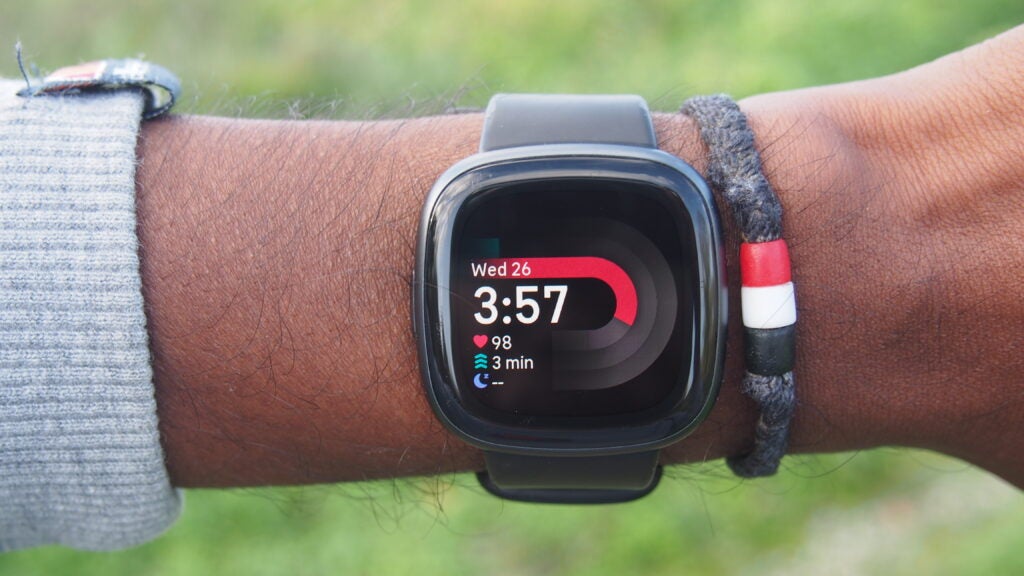
It could really be the same device as its predecessor aside from the fact that there’s now a physical button, which was present on the original Versa and the Versa 2. Now it’s been reinstated after being dropped on the Versa 3. That means less reliance on the touchscreen and an alternative way to get to the main menu screen or shortcut settings. It’s simply a significantly better solution to the squeezable case approach that Fitbit adopted for the Versa 3.
That case body measures in at the same 11.2mm thickness as the Fitbit Sense 2 so it’s slimmer than the Versa 3 and comes packing a 1.58-inch, 336 x 336 resolution screen, matching the screen used on the previous Versa. That means you’re getting a screen that offers a good level of brightness, rich colours and can be set to be on 24/7. Just be prepared to get a few days as opposed to a week from the battery life when this option is enabled. There is plenty of bezel on that screen though, and it would have been nice if Fitbit freed up a bit more space for that watch software to spread across.
Case colours-wise, there’s a pick of graphite, platinum, and copper rose and there are straps aplenty to pick from with a perforated sport band, woven leather and woven nylon bands among others on offer. If there’s one thing you can’t fault Fitbit for, it does give you a nice variety of watch strap options.
Button aside, the Versa 4 does feel like a Versa 3 clone. If you liked the look and the idea of a slightly slimmer design, then you’ll be happy here. If you were hoping Fitbit was going to make sweeping changes, that’s sadly not the case here, but the button is back at least.
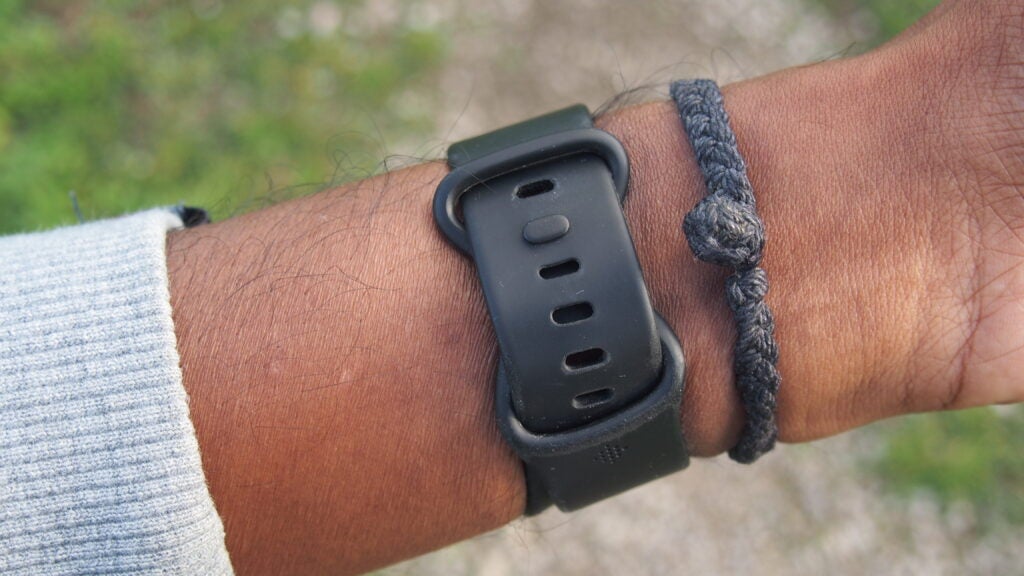
Features and performance
- Works with Android and iOS
- Latest Fitbit OS
- No Wi-Fi, third-party apps or music features
- Google Maps and Google Wallet incoming
The Versa 4 runs on the latest version of Fitbit’s FitbitOS, which is compatible with Android phones and iPhones and my testing time was spent using it with the latter.
Fitbit has never spoken about processing power packed into its smartwatches and that doesn’t change with the Versa 4. What I can say is that the performance feels a touch slicker than it did on the Sense 2.
It also benefits from the new-look software UI that feels more in line with what comes running on Google’s WearOS. It’s still very much FitbitOS in look and feel, but there are definitely some similarities here.
There are screen-sized widgets for things like heart rate and weather forecasts and the ability to expand the Today dashboard to see progress on elements including steps and distance. The button gets you into the main app screen as well and while it’s not a software or user interface that really stands out, it is very easy to get to grips with.
When you need to set the Fitbit Versa 4 up, it’s the same Fitbit companion phone app as before that you’ll need. Getting things set up does quickly bring to light some pretty sizable absent features. The Fitbit Gallery app store now only includes native apps for starters. There are still watch faces, both the free and paid-for kind and ones designed to make the best use of the always-on screen, but third-party apps have disappeared.
You do still have the same access and support for Amazon Alexa and there’s Fitbit Pay with Google bringing its own Wallet to the watch at a later date. You no longer have the option to use Google’s Assistant instead of Amazon’s one, which seems odd given that Fitbit is now part of Google and will be bringing other Google apps like Maps to the smartwatch.
That’s not the end, though. There’s now no Wi-Fi connectivity, music controls or music player. Maybe Google and Fitbit will look to bring those features back, but it feels like with the Pixel Watch in the picture, it’s keeping those features for that smartwatch instead.
The Versa 4 is still a competent smartwatch in spite of those lost features. Notifications are easy to read on the screen, but you just need to make sure that notification support is correctly set up in the Fitbit app. The widgets that are available make it easy to absorb information at a glance too, it’s just disappointing, on the whole, to see it lose so many big smartwatch features.
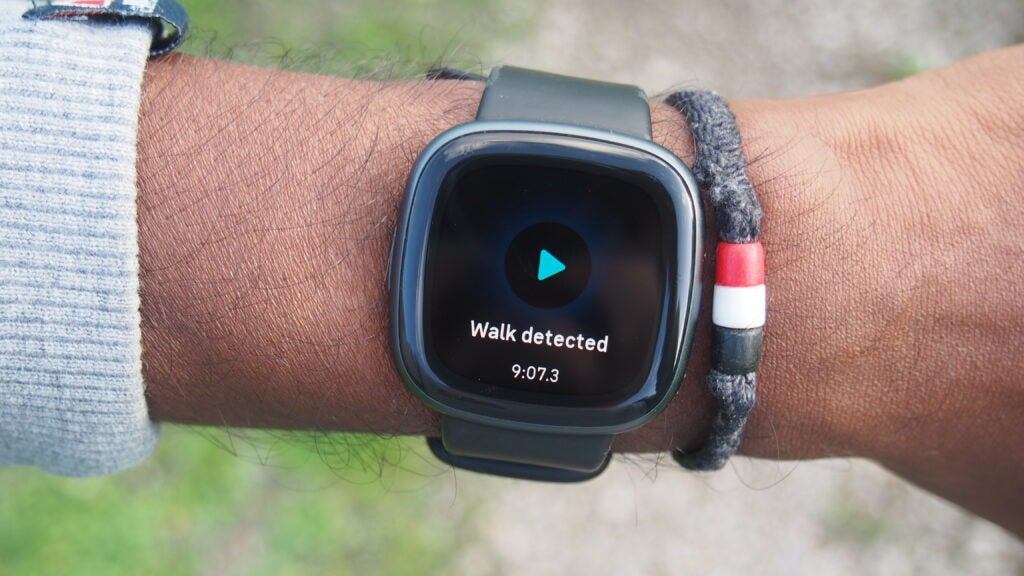
Fitness and health tracking
- All-day body response tracking
- Skin temperature variation tracking
- Daily Readiness Scores
- Built-in GPS
Again, it’s hard to see what’s significantly different from what the Versa 4 gives you that you didn’t already get on the Versa 3. Top line features are things like built-in GPS, SpO2, heart rate and temperature tracking (during night), Cardio Fitness and Daily Readiness Scores and the ability to look over stress management scores. There really doesn’t seem to be anything new here.
The core fitness and sleep tracking experience remain the key reasons to keep wearing the Versa 4. It’s pretty simplistic fitness tracking, capturing steps, nudging when you don’t move and displaying that information on the watch and inside the app that doesn’t feel daunting.
Step counts though were nicely in line with Garmin’s own fitness tracking and tracking from the Oura Ring 3. For sleep, you’re getting a breakdown of sleep stages, sleep scores, which felt like reliable insights into that sleep time on the whole. You can also track heart rate, temperature and SpO2, which can be useful to give you a sense of how your body might be feeling, but isn’t present to promise serious health warnings.
If you want further sleep insights, like the ability to create sleep profiles or learn how much you snore via the onboard microphone, you’ll have to sign up for Fitbit Premium to get them. That also unlocks features like wellness reports, more mindfulness sessions, video workouts and recipe ideas. There is a 6 month free trial to kick you off, but a monthly or annual subscription for some features that feel like they should be included can start to add up.
Sensors-wise, you’re getting Fitbit’s PurePulse optical heart rate sensor technology, which can deliver continuous and heart rate data, though it’s not the most spotless and accurate sensor in my testing, particularly when it comes to putting it to the high intensity test where it was at times 8-10bpm out for maximum heart rate readings against a heart rate monitor chest strap. You can’t connect an external heart rate monitor to improve performance during exercise either.
There’s still built-in GPS, but again, it’s not the best performing accuracy-wise. What’s more problematic is the length it can take to lock onto a GPS signal. Fitbit does offer features like automatic exercise tracking and something you can track activities like runs, swims and cycling along with dedicated profiles for other activities that offer fewer metrics.
Daily Readiness Scores is another Premium-only feature, that can be useful in telling you when to work out based on other historical data like sleep. This does feel like it offers useful guidance when the data it’s looking at is largely accurate. Is it a big enough feature to want to pay more for it when other watches and wearables offer similar support upfront? I can’t I am convinced.
While it lacks the ECG sensor found inside of the Sense 2, it does still have the capability to deliver irregular heart rate notifications that Fitbit says can be used to help detect signs of the disorder atrial fibrillation. It also misses out on the electrode-based EDA sensor, which is designed to indicate the body’s response to stress, though it does offer stress management scores from data like exercise, sleep and heart rate to offer similar insights. So you’re not missing out on all of the stress features Fitbit has developed.
The Versa 4 is a really very good fitness tracker and also tries to cater to those who want to pay a bit more attention to their health and track some exercise too. Unfortunately, it’s not evolved or improved in some of those areas it clearly needed to. Especially on the exercise tracking front.
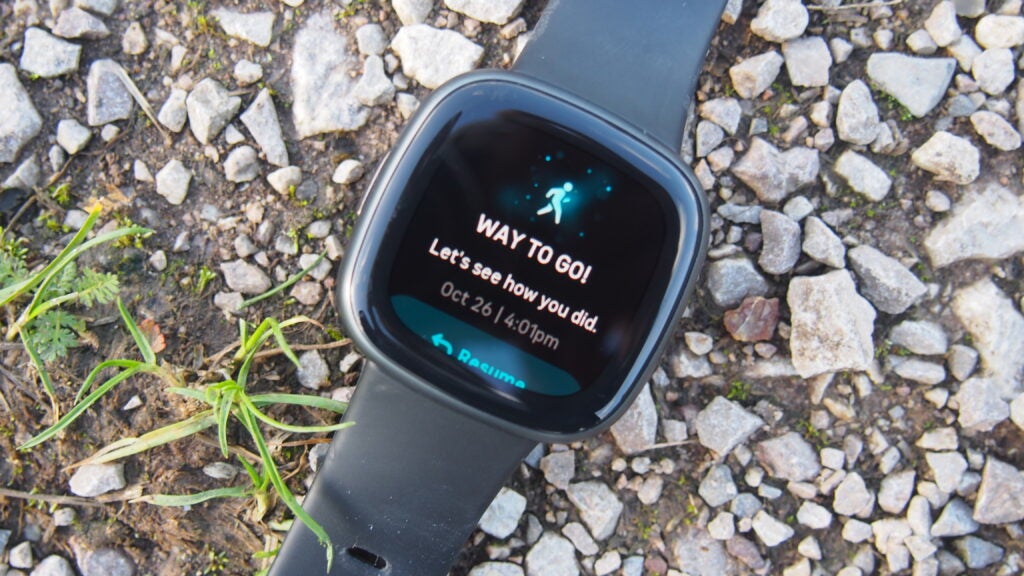
Battery life
- 6+ days battery life
- Quick charge battery life
- Up to 3 days in always-on mode
Fitbit promises that you can get 6+ days of battery life on the Versa 4, which is the exact same battery number attached to the Versa 3. It also has the same quick charge feature that gets you a day’s play from a 12-minute charge.
With very little really changing here, it’s no surprise to find that battery performance hasn’t really changed. You can get over six days and I have often found it’s good for a whole week. Switch the AMOLED screen to always-on and it’s half that time. Throw in some GPS time and that will noticeably eat into that battery as well.
It’s good to see that Fitbit has managed to deliver equal and not worse battery life than the last Versa, but it’s also hardly surprising when it’s not having to power anything really new.
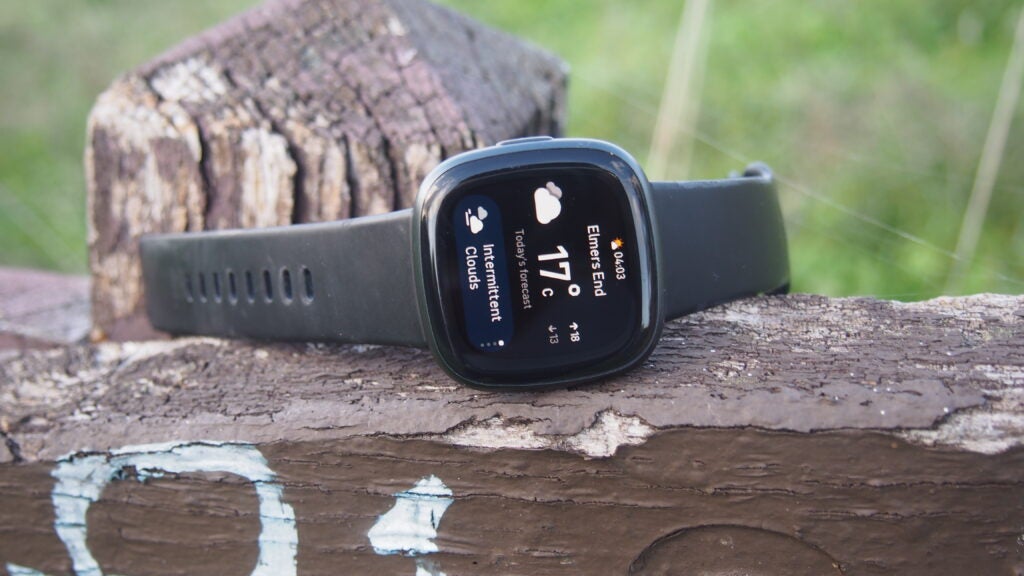
Latest deals
Should you buy it?
If you want a nice smartwatch for tracking steps and sleep: Yes, those are the basics, but that’s still an area where Fitbit excels and that doesn’t change on the Versa 4.
You want the best smartwatch: Dropped features and the disappearance of third-party apps mean this is not the same smartwatch as the Versa 3.
Final Thoughts
The original Fitbit Versa was the breakthrough smartwatch for Fitbit. It felt like the last few Versa watches were building some momentum, but the Versa 4 falls very flat. Do Google and Fitbit have intentions to keep this smartwatch alive when there’s now the Google Pixel Watch? The signs so far aren’t looking good.
How we test
We thoroughly test every fitness tracker we review. We use industry standard testing to compare features properly and we use the watch as our main device over the review period. We’ll always tell you what we find and we never, ever, accept money to review a product.
Worn as our main tracker during the testing period
Heart rate data compared against dedicated heart rate devices
FAQs
No, you cannot play music or control music playing on your paired smartphone with the Versa 4. Fitbit has removed the music features and Wi-Fi connectivity it included on the Versa 3 to support those features.
Yes, you can make contactless payments on the Versa 4 using Fitbit Pay with support for Google Wallet also set to be added through a future software update.
Full specs
Sustainability
Trusted Reviews holds the fact that global warming is not a myth as a core value and will continuously endeavor to help protect our planet from harm in its business practices.
As part of this mission, whenever we review a product we send the company a series of questions to help us gauge and make transparent the impact the device has on the environment.
You can see a detailed breakdown of the questions we ask and why in our sustainability info page. In lieu of answering each of these questions, Vivo has provided us with its company Sustainability Report.




